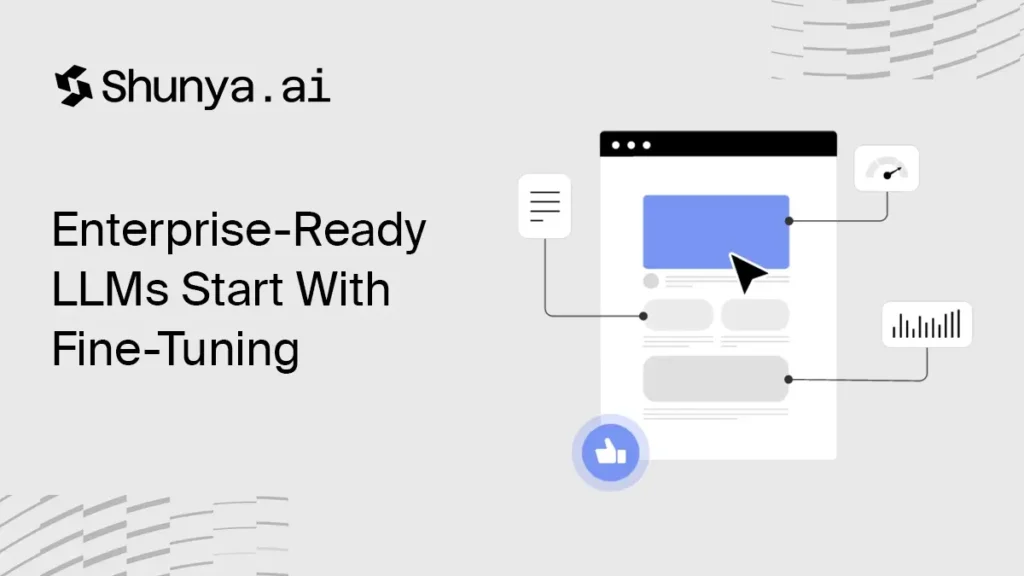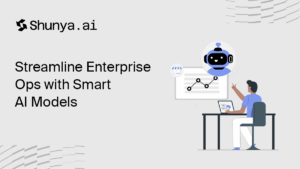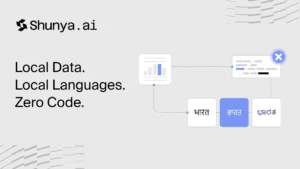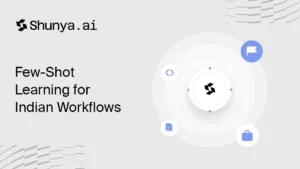| Blog Summary Fine-tuning Large Language Models (LLMs) enables enterprises to adapt powerful general-purpose models to their unique workflows, data, and tone. This guide outlines best practices for enterprise LLM fine-tuning, including dataset design, infrastructure choices, evaluation methods, and security measures. Whether building customer support bots or compliance tools, enterprises can achieve safer, more performant AI with targeted fine-tuning. |
Large Language Models like GPT-4, Claude, and LLaMA are revolutionising enterprise workflows. But off-the-shelf models often fall short in domain-specific scenarios. From regulated industries like finance and healthcare to fast-moving sectors like eCommerce and logistics, enterprises need fine-tuning to align LLMs with their operational context.
Enterprise LLM fine-tuning refers to the process of adapting pre-trained models to an organisation’s unique data, vocabulary, and use cases. Done right, it improves accuracy, reduces hallucination, safeguards brand tone, and unlocks higher ROI from AI investments.
In this guide, we explore the best practices that leading organisations follow while fine-tuning LLMs for enterprise applications.
Why Enterprises Need Fine-Tuning
Pre-trained ≠ Ready for Production
Most large models are trained on general internet data. They do not understand internal policies, compliance constraints, or domain-specific knowledge.
For example:
- A retail chatbot may default to generic return policies
- A healthcare assistant might generate unsafe medical suggestions
- An internal finance tool may misinterpret regulatory terms
Fine-tuning addresses these risks by injecting proprietary knowledge into the model’s responses.
Key Benefits
- Improved accuracy on domain-specific tasks
- Reduced hallucinations and factual inconsistencies
- Stronger data privacy compared to using public APIs
- Brand-aligned tone in customer-facing applications
- Greater control over model outputs and behaviours
Best Practices for Enterprise LLM Fine-Tuning
1. Curate High-Quality, Task-Specific Datasets
Fine-tuning quality depends more on data quality than model size.
Focus Areas:
- Collect domain-relevant documents (FAQs, support chats, SOPs)
- Label edge cases and exceptions clearly
- Filter out irrelevant or noisy text
- Use a mix of structured and unstructured formats
- Maintain contextual consistency across examples
💡 Tip: Avoid using general internet text. Prioritise internal documents and conversations.
2. Choose the Right Fine-Tuning Strategy
There are multiple approaches depending on your model size and infrastructure maturity.
Options Include:
| Strategy | Description | Ideal For |
|---|---|---|
| Full Fine-Tuning | Update all model weights | Large enterprises with GPU access |
| Parameter-Efficient Tuning (LoRA, QLoRA) | Modify only small adapter layers | Startups or resource-limited teams |
| Prompt-Tuning / Prefix-Tuning | Keep model frozen and learn prompt vectors | Rapid prototyping |
| Retrieval-Augmented Generation (RAG) | Add enterprise context at inference time | Scenarios needing fresh data |
3. Monitor for Bias, Drift, and Security
LLMs are prone to inheriting bias and generating unexpected content. Ongoing monitoring is essential.
Enterprise Guardrails:
- Run regular safety tests for bias and toxicity
- Include red-teaming prompts in your validation suite
- Track model drift via versioned performance reports
- Apply output filters (e.g. regex, vector checks)
- Implement audit logs for prompt-response pairs
4. Evaluate with Domain-Specific Metrics
Standard metrics like BLEU or ROUGE are not sufficient in enterprise contexts.
Better Evaluation Methods:
- Use task-specific checklists for factuality, safety, and tone
- Perform human-in-the-loop evaluation with SMEs
- Build gold-standard response benchmarks internally
- Track user feedback and acceptance rates post-deployment
5. Secure Data Pipelines and Model Access
Enterprises must treat LLMs as critical infrastructure.
Compliance Checklist:
- Encrypt datasets during training and storage
- Use role-based access controls for model APIs
- Set up logging and anomaly alerts for prompt injections
- Avoid exposing sensitive PII in training samples
Bonus: If operating in regulated sectors, conduct periodic security audits as per ISO 27001 or SOC 2 standards.
Common Use Cases for Fine-Tuned Enterprise LLMs
| Function | Use Case Example |
|---|---|
| Customer Support | Automating queries with contextual accuracy |
| Finance | Generating audit-compliant summaries |
| Legal | Contract analysis and risk detection |
| HR | Screening CVs with internal hiring logic |
| Product Discovery | Personalised recommendation engines |
| Cross-border Logistics | Translating trade documents accurately |
Explore how this approach powers cross-border shipping automation in ShiprocketX’s international logistics platform.
Making AI Work for Indian Enterprises
Shunya AI is built on the belief that AI should adapt to the enterprise, not the other way around.
Through multimodal capabilities, Indian language understanding, and plug-and-play fine-tuning tools, Shunya enables:
- 10x faster enterprise deployments
- On-premise or private-cloud LLM deployments
- Domain-specific knowledge grounding
- Full audit and compliance readiness
Shunya makes enterprise LLM fine-tuning accessible, secure, and scalable—especially for India’s diverse and dynamic markets.
Get Started With Enterprise-Ready Fine-Tuning
Fine-tuning is no longer optional—it’s essential for enterprises aiming to build trusted, reliable AI systems.
🔧 Whether you’re building a support assistant, sales co-pilot, or document summariser, follow these best practices to:
- Align with your business goals
- Reduce operational risk
- Deliver exceptional AI-powered experiences
Get started with Shunya AI for a fine-tuning demo tailored to your enterprise workflows.
Prompt engineering optimises inputs to get better outputs from static models. Fine-tuning changes the model’s parameters so it inherently understands the desired context.
Any enterprise that handles domain-specific queries or regulated data can benefit from fine-tuning. Even mid-sized firms can use parameter-efficient tuning strategies to customise models cost-effectively.
Yes. Fine-tuned models can be incrementally retrained with new data or paired with Retrieval-Augmented Generation for real-time context updates.
Costs vary by model type, GPU usage, and data size. LoRA-based fine-tuning significantly reduces infrastructure costs and is often the preferred choice for budget-conscious teams.



